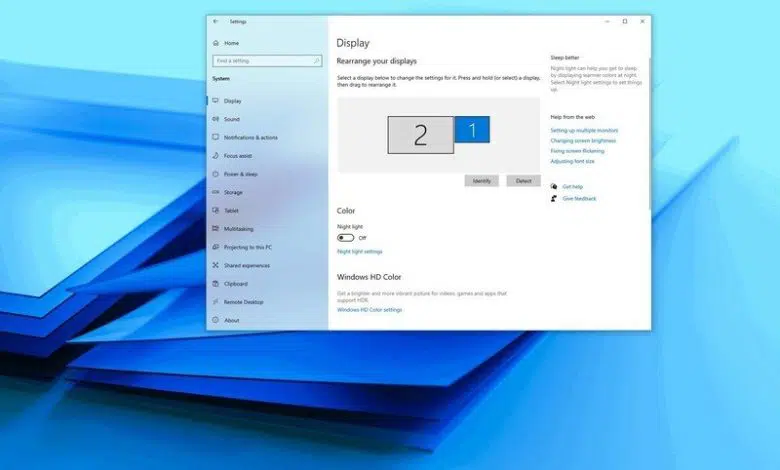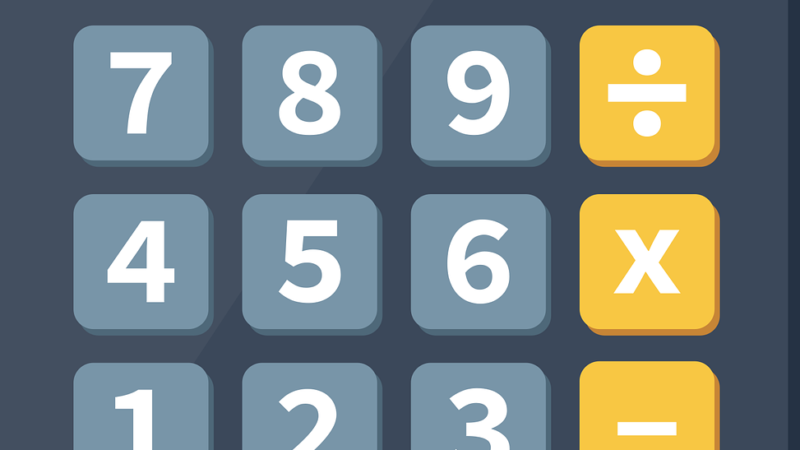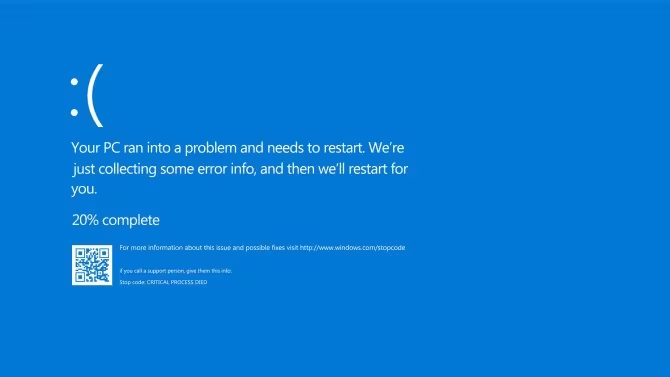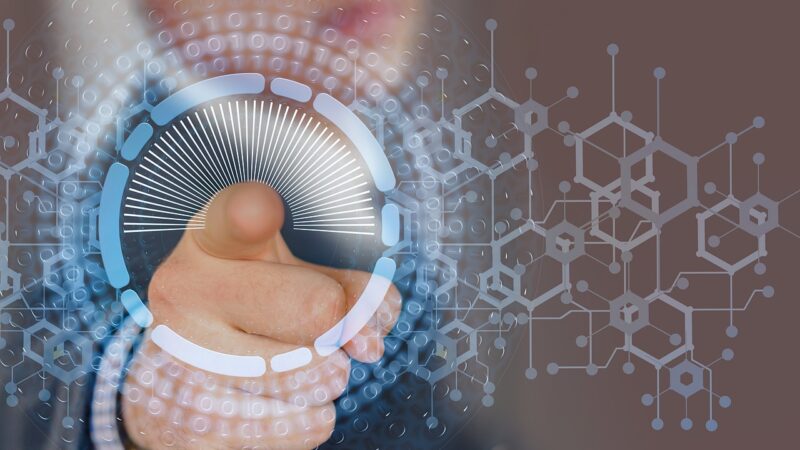How to fix second monitor not detected in Windows 10

In this guide, we will show you the steps to detect a second monitor on your laptop or desktop when Windows 10 doesn’t find it automatically.
In Windows 10, setting up a second monitor is a convenient way to expand your desktop canvas for working with multiple apps and playing games on your laptop or desktop.
Although connecting an external display is usually a simple process, sometimes Windows 10 may not detect older displays or second monitors due to driver or hardware-related issues. However, if your device is experiencing this issue, there are several troubleshooting steps (including verifying the connection and installing the correct drivers) to quickly resolve the issue.
In this Windows 10 guide, we’ll walk you through three practical ways to troubleshoot and fix issues that may be preventing the system from detecting the second monitor automatically.
How to fix external monitor connection issues by troubleshooting hardware
When your desktop or laptop doesn’t detect the second external monitor, it could be a problem with the software, but it could also be a problem with the physical connection.
If your monitor isn’t listed in settings, try these steps before changing settings in Windows 10:
- Confirm that the monitor is connected to a power source.
- Confirm that the monitor is on.
- Power off and then power on the computer to refresh the connection.
- Use the monitor’s built-in controls and select the correct input port.
- Check the connection of the signal cable between the monitor and the graphics card of the PC.
- Disconnect the signal cable from both ends, wait about a minute, and reconnect it firmly.
- Try a different signal cable to confirm that it is not a faulty cable.
- DisplayPort and HDMI come in different versions, which means you should also check with the manufacturer for details of the requirements to ensure you have the correct cable.
- Change ports if your monitor and graphics card include multiple ports.
- Connect the monitor to another computer to see if the problem is with the monitor.
- Connect another working monitor to determine that the problem is not the graphics card.
- Disconnect all peripherals (such as printers, cameras, and USB devices) to confirm that none of the other devices are in conflict with the monitor.
- If you have a Surface Pro 7 connected to a dock, unplug it and try connecting the monitor directly to the tablet to confirm that the dock isn’t the issue.
- Update the external monitor’s firmware to help fix bugs and compatibility issues (rare).
If the basic troubleshooting steps above don’t fix your second monitor, you can troubleshoot your software.
In the event that the problem is the monitor, or if you are looking for a new one in the market, the HP Z27 is our best option at the moment. You can find more options in our best 4K monitor roundup.
1. ExpressVPN – The Best VPN Available Right Now
This is our top pick for anyone looking to get started with a VPN. It offers a great combination of speed, reliability, great customer service, and affordability. There is a 30 day money back guarantee so give it a try today.
From $6.67 per month at ExpressVPN
second monitor
HP Z27
The best monitor for most users
The HP Z27 is an excellent 27-inch monitor for creators and general-purpose tasks due to its slim design, incredible 4K image quality, and USB-C connectivity alongside the usual DisplayPort and HDMI. The display even includes a built-in hub with USB-A 3.0 ports.
How to fix external monitor connection issues via Settings
After concluding that there is not a physical problem with the connection, the monitor, or the device, you can use the Settings app to force the system to detect the second monitor.
Force second screen detection
To manually detect a second monitor in Windows 10, follow these steps:
- Open Settings .
- Click System .
- Click Monitor .
- In the “Multiple Displays” section, click the Detect button to connect to the external monitor.
- (Optional) In the “Rearrange screens” section, click the Detect button in the lower right corner (if applicable).Quick note: If you only have one monitor, the option will not be present as it is only available when multiple displays are connected.
Once you complete the steps, Windows 10 should now detect the external monitor.
Connect wireless external display
To connect a wireless display in Windows 10 as a secondary display, follow these steps:
- Open Settings .
- Click Devices .
- Click on Bluetooth and other devices .
- Turn on the Bluetooth toggle switch (if applicable).
- Click the Add Bluetooth or other device button.
- Select the Display or Wireless Base option.
- Confirm that the wireless display is on and discoverable (see device documentation).
- Select the display (wireless monitor, TV or PC with Miracast support) from the list.
- Continue with the instructions on the screen.
After completing the steps, the wireless display will be detected as a new external display on the computer.
How to fix external monitor connection issues via the latest graphics drivers
If your computer has a buggy, outdated, or corrupt graphics driver, this can cause issues that can prevent Windows 10 from detecting and setting up a second monitor. The easiest method to fix this issue is to update, reinstall or downgrade the driver to resolve the connection issue between the laptop/desktop and the external monitor.
Update graphics driver
To update the graphics card driver through Windows Update, follow these steps:
- Open Settings .
- Click Update & Security .
- Click Windows Update .
- Click the View optional updates option.
- Quick Tip: If the option is not available, it means that Windows Update does not have a newer driver available for download.
- Click Driver Updates to expand the category.
- Select the newest graphics driver to install on Windows 10.
- Click the Download and Install button.
Once you complete the steps, Windows Update will download and install the graphics driver fixing the detection issue with the monitor.
If Windows Update does not have a more recent version of the driver, check the manufacturer’s support website for download and install a more recent version (if available).
Reinstall the graphics driver
To reinstall a broken video driver in Windows 10, follow these steps:
- Open Start .
- Search for Device Manager and click the top result to open the app.
- Double-click to expand the Display Adapters branch.
- Right-click on the adapter and select the Uninstall device option.
- Clean the Delete the driver software for this device option (if applicable).
- Click the Uninstall button.
- Restart the computer.
- Open Device Manager again.Quick note: Windows 10 should re-detect your monitor automatically. If not, use Device Manager to check for hardware changes and force the system to reinstall the display.
- Right-click on the computer name and select Scan for hardware changes option.
After completing the steps, Windows 10 should automatically detect and reinstall the driver. However, it’s a good idea to follow the steps above to make sure the driver installs correctly.
Rollback graphics driver
If your computer has recently been upgraded or you updated the graphics driver manually, and Windows 10 cannot detect the second monitor, rolling back to the previous driver may resolve the issue.
To remove and reinstall a previous version of a graphics driver in Windows 10, follow these steps:
- Open Start .
- Search for Device Manager and click the top result to open the app.
- Double-click to expand the Display Adapters branch.
- Right-click on the graphics adapter and select the Properties option.
- Click on the Driver tab.
- Click the Back Controller button.
- Select an option to answer the question.
- Click the yes button.
- Reboot the device.
Once you complete the steps, Windows 10 should detect and start creating content on the external monitor.
Update the graphics driver using the manufacturer’s control panel
Windows 10 can detect and configure drivers for most graphics adapters, but the versions available through Windows Update are often not the latest. If you need to install the latest driver, companies like NVIDIA, AMD, and Intel offer tools to quickly install the latest updates that can help troubleshoot external display issues.
These are the download links:
If you use the manufacturer’s control panel, installation is easy. You just need to download and double-click the installer using the links above that apply to the adapter you have, follow the on-screen instructions to complete the setup, and then check for updates.
Alternatively, you can download the drivers directly from the manufacturer’s support website by following their instructions. You can use the links below to find the drivers:
To check the graphics card vendor and driver version in Windows 10, follow these steps:
- Open Start .
- Find System Information and click the top result to open the app.
- Double-click to expand the Components branch in the left pane.
- Select the Monitor category.
- Confirm the Adapter Type and Driver Version information to determine the driver card model and current version.
Once you complete the steps, use the links above to find, download, and install the correct driver.
One of the best graphics cards you can get is the NVIDIA GeForce RTX 3080 for its excellent performance and ports to connect multiple monitors.
Support for multiple monitors
NVIDIA GeForce RTX 3080
The RTX 3080 offers support for multiple monitors
If you need to replace your graphics card, the RTX 3080 is a great option. Not only for its excellent performance for gaming and workloads, but it also includes multiple DisplayPort and HDMI ports and is perfect for multi-monitor setups.
Finally, keep in mind that manufacturers (for example, Dell, HP, Razer, Acer, and Microsoft) often change the original drivers to optimize them for their desktops and laptops. This means that if you have a brand name computer (also known as an original equipment manufacturer (OEM) computer), you should always first think about using the graphics driver available through the device manufacturer before trying the ones available through the manufacturer. graphics card to minimize the chances of running into other issues.




